Sub-Saharan Africa cannot be numbered among the main centers of the Russian emigration. Nevertheless, there were Russian Orthodox communities in that remote part of the world, too. The Russian émigré community there consisted mostly of highly-skilled workers who arrived in South Africa (the South African Republic, or SAR) from elsewhere, having been invited by various companies, educational institutions, or organizations. Some stayed on in the SAR after their studies or after concert tours. At times, there were a total of about 100 Russians living across the SAR, with half of them being situated in Johannesburg, the largest city in South Africa. It is thus only natural that this city was the center of church life. It was here that the Holy Prince Vladimir community came into being. This community comprised Russian émigrés of the first wave and Serbs who came to South Africa after World War II.
The history of the Russian community in South Africa began with the emergence of the Society of Russian Émigrés in Johannesburg in 1952. Its members decided that they needed a small center for Russians and, in particular, a Russian church. In the same year, Archpriest Symeon Starikov (1891-1974), the founder and pastor of several African parishes of the Russian Orthodox Church Outside of Russia, was invited to South Africa by the Society. Prior to ordination, Symeon Starikov had worked as an engineer for 30 years. He was ordained in 1945 in Regensburg. After being ordained, Fr. Symeon continued to take an active part in public life as he moved to Belgium and thence on to Africa. He enjoyed the respect and love of his parishioners wherever he went. Fr. Symeon traveled to South Africa by plane on September 1, 1952, from his former residence in Nairobi.[1]www.st-sergius.info Services were held in the Anglican church of Saint Francis. The priest’s first visit to South Africa lasted over a month. During this time period, a council was convoked that resolved to establish the first Russian Orthodox Church in the SAR. This resolution was soon ratified by the Synod of Bishops of the ROCOR, and a parish named in honor of Saint Prince Vladimir, Equal-to-the-Apostles, was founded in Johannesburg.
In October 1952, an anti-colonial revolt began in Kenya, causing a significant portion of Russians to emigrate from that country. Metropolitan Anastasy accordingly took a decision to transfer Fr. Symeon to Johannesburg, where he arrived on March 28, 1953.[2]Ibid. By then, the church counted over 40 Russians and Baltic Germans, as well as 200 Serbs, who were members of the Saint Sabbas Community that lacked its own priest. The parish was entirely self-financing. The parishioners covered the living costs for the priest and his family as well as his trips to conduct missionary work, which speaks to the advantageous financial position of this relatively small community. At first, services took place in one of the side chapels of the Anglican cathedral in Johannesburg. Тhe totality of the community’s property comprised some sacred vessels and revetments for a few icons, which were kept in storage and taken back there after every service. No later than the early 1950s, the Russian community in Johannesburg had begun to collect funds to acquire a building in which they might set up a chapel, a rectory, and a venue for events of the Society of Russian Émigrés. Large amounts of funds were collected at charitable events such as the Day of Russian Culture. From time to time, Fr. Symeon would conduct missionary trips throughout the SAR, the Belgian Congo, and Rhodesia. In the latter half of 1958, due to heart problems, Fr. Symeon had to leave South Africa.[3]Ibid. He arrived in America and was appointed rector of the Holy Resurrection parish in Santa Barbara, where a Russian church was erected through his efforts. Fr. Symeon Starikov died in September 1974.
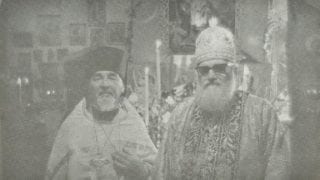
Patriarch of Alexandria Nicholas VI after serving liturgy with Fr. A. Chernai in St. Vladimir’s church of Johannesburg. 1969
A second stage in the history of the parish began with the appointment of Archimandrite Alexis Chernai as its rector.[4]Alexander Chernai was born in 1899 in the city of Kovno. He graduated from a gymnasium of the Imperial Philanthropic Society. He took part in the Russian Civil War as a soldier in the ranks of … Continue reading Fr. Alexis arrived at the new place where he was to serve on January 25, 1959. By that time, a church administrative body (parish council) had already formed. Its members included a Warden, Professor Boris I. Balinsky; a Secretary, Foxcroft; a Senior Sister, T. R. Kiersey [spelling?], and others. An excellent choir was formed under the direction of the Baroness von Raden (1906-2000).
Sophia Alexandrovna von Raden, the daughter of a district Marshal of Nobility from Kharkov Governorate, fled with her mother and sisters to Germany in 1919, where she remained and worked until the end of World War II. In her memoirs, Sophia Alexandrovna tells of how she visited a camp for Ostarbeiter during the War and attempted to help them morally and even materially. In 1945, her family found themselves in the Soviet Zone of Occupation, and Sophia von Raden worked as an interpreter for Red Army officers. Nevertheless, several months later, she was arrested on accusations of espionage and collaboration with the enemy. Strange as it may sound, it was her wartime connections with the Ostarbeiter that elicited the most suspicion on the part of the Soviet investigators. The occupying authorities arrested Sophia Alexandrovna and she spent eight years in German prisons. In April 1954, Sophia Alexandrovna and her mother Alisa Iulievna succeeded in escaping to West Berlin via the “S-Bahn” overground train line, which continued to link the two halves of the city. At the invitation of their sister, Nina Alexandrovna von Raden, and her husband, Vladimir Alexandrovitch Shvetsov, they emigrated to South Africa in the summer of the same year. There, Sophia Alexandrovna found a job as a secretary in the branch of a German firm, while her mother gave Russian lessons.[5]www.st-sergius.info
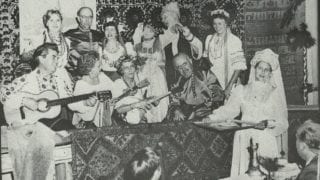
Parishioners at Russian cultural event. Johannesburg. 1962
Other choir members included Dr. Krasnokutsky, Colonel Mozharov, and others. It was particularly adorned by the talent of the well-known artist and singer Victor Arkhipovitch Ivanov (1909-1990). Victor Arkhipovitch was one of the founders of the Society of Russian Émigrés in South Africa. He came to that country on tour as a part of the famous Platov Choir of Don Cossacks and decided to stay there forever. Victor Arkhipovitch Ivanov was the son of a Major General of the Don Army. In Yugoslavia, he graduated from the Emperor Alexander III Don Cadet Corps. He was taught to draw by Lieutenant General Nikolai Petrovich Karpov, and later by the portrait-painter Mikhail Mikhailovitch Khrisogonov. Victor Arkhipovitch’s first individual exhibition was held in 1950 and was inaugurated by the Minister of Culture of South Africa. The paintings and caricatures of this talented artist are now displayed in many South African museums. Victor Arkhipovitch was a splendid singer. He performed as a baritone in the Johannesburg Opera House, toured the country, and produced a record of Russian songs, “From a Don Cossack with Love”. “Thanks to his cheery manner, Ivanov was the heart of Russian gatherings, at which he sung Russian songs, accompanying himself on the guitar”. [6]Archim., Alexis Chernai. Zhiznenyi put russkogo sviashchennika. San Francisco: Globus, 1981, p. 195.
Another outstanding member of the parish was Reader Boris Ivanovitch Balinsky (1905-1997), one of the world’s leading embryologists, a pioneer of electron microscopy in Africa, and a man with a remarkable life story. He was a former deputy director of the Academy of Sciences of the Ukrainian Soviet Socialist Republic and a prolific researcher. In the aftermath of World War II, he ended up in England, whence he emigrated to South Africa with his family in 1949. He was the first South African biologist to make use of an electron microscope in his research. Boris Ivanovitch is the author of a whole range of academic works and several monographs on experimental embryology and entomology. His textbook “Introduction to Embryology” was published in 1960. It became one of the most popular textbooks in this field worldwide and went through twelve editions in various world languages.[7]www.st-sergius.info
The members of the parish were mostly successful and well-off people. People of the most varied professions could be found among the Russian settlers in South Africa: university professors, owners of shops, publishers and magazine editors, surveyors, engineers, an antiquarian, accountant, taxi driver, and even one director of a diamond-exporting company. Women were generally occupied with housework, served as secretaries, or worked in large shops. Among the parishioners, worth mentioning are the prominent entomologist Yury Stepanovich van Zona; Leonid Vsevolodovitch Mansyrev, who was a consultant to the SAR’s Minister of Defense in the early 1970s; and Constantin Constantinovitch Vladykin, one of the founders of the “Society of Russian Émigrés”.
In 1960, the parish moved from the Anglican church to a Swedish Lutheran church. The lack of a dedicated space for worship had negative effects on the life of the parish. It is true that Fr. Alexis had set up a small chapel in his flat shortly after arriving, but it obviously could not meet the needs of the community. In 1961, a house was acquired and a church built in it, which subsequently came to be a bulwark for Orthodox Russians and Serbs from the Cape of Good Hope all the way to Kenya. More than once, the Greek Metropolitans Nicodemus and Paul, who had a positive view of the Russian émigrés, celebrated the Liturgy in the Church. Patriarch Nicholas IV of Alexandria served in the Russian church during a visit to South Africa.
Apart from South Africa, there were small Russian communities in Rhodesia, the Belgian Congo, and Kenya. In the Belgian Congo, there were Russian communities in Elizabethville, Leopoldville, Brazzaville, Kombowa and Kolwesi. In Salisbury, services took place in the house of Boris Vasilievitch Zakrevsky; in Bakwanga (Belgian Congo), they were held in the house of the engineer G. G. Makarov. In Kolwesi, Vigil Services and Liturgies had been being served in the house of Count V. Apraksin at the time when Fr. Alexis arrived.
In Durban, the tiny Russian community comprised 10-12 people. It was led by Xenia Alexandrovna Belmas (a former prima donna of the Berlin opera). Among the parishioners were also the Ignatievs (the wife a renowned former ballerina, the husband a composer). When the Russian priest came, services were held in the Greek church, which the Greek clergy kindly provided for this purpose. A small Russian community of approximately 10 people existed in Mozambique, at that time a Portuguese colony. They all lived in the city of Lourenço Marques (now Maputo, the capital of Mozambique). Services took place in the house of the pious Odintsovy family. Around 30 Russians were living in Kaapstad (now Cape Town). When the priest came, services were celebrated in an Anglican church. In all of these communities, services were not regular, but occurred only when Archimandrite Alexis Chernai undertook missionary journeys; he was the only Russian Orthodox priest in the whole of Southern Africa, and the small Saint Vladimir Church was the only Russian church in sub-Equatorial Africa. An important innovation made by Fr. Alexis was to publish an Orthodox missionary bulletin, which came to pass in 1974, with the publication becoming the first to be issued in the Russian diaspora in South Africa.[8]Archim., Alexis Chernai. Zhiznenyi put, pp. 201-202; 204-212.
Fr. Alexis’ work was restricted primarily to the pastoral care of Russians living in Southern Africa and, in part, of Serbs who suffered from a lack of their own clergy and were very happy to attend a Russian church. The Russian Church did not conduct any missionary work among native Africans, even though some of them demonstrated a certain interest in the Church. For example, in the Kingdom of Lesotho, a group of Africans formed, calling themselves the “Orthodox African Church”, and petitioned Fr. Alexis to receive them into the Russian Orthodox Church. One of the members of this group travelled several times to meet Fr. Alexis and invited him to visit Lesotho. From a missionary point of view, this could have led to positive results, but the government of the SAR was opposed to any rapprochement between Russians and native Africans. As Fr. Alexis was told, several government institutions were categorically opposed to Africans receiving pastoral care from the Russian Church, and it was even implied that, should he violate government policy, he might be stripped of his residence permit.[9]Archim., Alexis Chernai. Zhiznenyi put’, p. 204.
It was already mentioned above that the Russian parish, which had been conducting services in a chapel of the Anglican cathedral, was forced to abandon the latter. In fact, this occurred because a separate chapel was required for an enormous influx of Africans into the cathedral. Why was only the Russian Church restricted in its missionary activities?
It must be emphasized that missionary activities among the native population were forbidden to the Russian Church and no others, for the other Christian churches did not encounter any impediments from the government in this regard. It was already mentioned above that the Russian parish, which had been conducting services in a chapel of the Anglican cathedral, was forced to abandon the latter. In fact, this occurred because a separate chapel was required for an enormous influx of Africans into the cathedral. Why was only the Russian Church restricted in its missionary activities? The crux of the matter is that, up until 1994, a system of apartheid existed in the SAR that impinged upon the rights of the native population. This fact was actively exploited by Soviet propaganda, which was targeted at the Black population of the country and especially at the urban proletariat, which was living in the very worst conditions. As a result, in the eyes of the local population, the Soviet Union and Russians, in general, were associated with a coming deliverance from racial discrimination. Archimandrite Alexis recalled that, often, when Africans found out he was Russian, they confided in him that they were awaiting the coming of saviors from Russia to deliver them from persecution and that when Russians would seize power in South Africa, life for black people would become wonderful and free. Clearly, some of them saw the Russian Church as representing the Soviet Union and regarded joining it as the first step toward liberation. [10]Ibid.
A number of objective factors caused church life in South Africa to die out over the years. The Russian colony in South Africa consisted almost entirely of members of the “first” emigration, that is, elderly people. There were ever fewer weddings and baptisms in the parish, and ever more funerals. As a result of numerous mixed marriages, children were being raised in other traditions and many of them spoke little Russian, if any at all. As everywhere, prices in South Africa began to rise and inflation began to increase. In order not to become a burden to the parish, Archimandrite Alexis had to find work as superintendent of a Bible Society warehouse. The Serbs, who had for many years supported the Russian Church, requested that a Serbian priest be sent to them in order to serve and teach the Law of God to children in their own language. Certain of the parishioners left South Africa. The parish started to fade away in front of people’s eyes. There was a moment when the government of South Africa was prepared to take in a group of 1500 Russian Displaced Persons from Italy, but nothing came out of this. Communications with parts of the church’s flock living in various parts of South Africa ceased. As African countries became independent, a “Black Terror” began in many of them, with wars emerging among different tribes and political and religious factions, and quality of life decreased sharply. This all led Whites to leave these countries. The financial situation of the parish was also difficult. The parishioners were growing old and were no longer able to make the contributions they previously had. It became too expensive even to travel around to parishes across the SAR. Rents rose, and the prices for food, electricity, and the telephone went up. It became ever more difficult to make ends meet. Previously, appeals for help to other churches had yielded results; now, due to rising inflation, they were also all forced to economize. Archimandrite Alexis’s health suffered a serious blow in the climate of South Africa. Doctors advised him to leave as soon as possible. His small flock who still remained gradually came to the same conclusion. There were no real prospects for the future, and to live in the past while cultivating illusions about the present would have bordered on self-deception. In September 1974, Archimandrite Alexis departed for the United States. In the late 1970s the Russian parish in the SAR was abolished and the building that housed the church demolished.
The overwhelming majority of Orthodox in South Africa are Greeks, Africa being the canonical territory of the Patriarchate of Alexandria. As of 1994, there were 14 Greek Orthodox parishes in South Africa, served by 15 priests. They are grouped into two Metropolises: the Metropolis of Johannesburg, led by Metropolitan Damaskinos Papaandreou, and the Metropolis of the Cape of Good Hope, led by Metropolitan Sergios Kikkotis. Nowadays, there is one Russian Orthodox church in South Africa, dedicated to Saint Sergius of Radonezh and founded in Johannesburg in 1998. At first, services took place in a house chapel. Construction work on the parish church was begun in February 2000. On March 2, 2000, the church was consecrated by Metropolitan Kyrill of Smolensk and Kaliningrad, the future Patriarch of Moscow and All Russia.[11]www.st-sergius.info
References
| ↵1 | www.st-sergius.info |
|---|---|
| ↵2 | Ibid. |
| ↵3 | Ibid. |
| ↵4 | Alexander Chernai was born in 1899 in the city of Kovno. He graduated from a gymnasium of the Imperial Philanthropic Society. He took part in the Russian Civil War as a soldier in the ranks of Yudenich’s army. After the defeat of the White Army, he was held in captivity by the Polish authorities in Fort Stefan Bathory together with other volunteer soldiers, but escaped. He made it to Lithuanian territory, where he enrolled in and graduated from Vilnius Theological Seminary. On September 20, 1925, he was ordained as a deacon by Metropolitan Eleutherius of Vilnius and Lithuania and, in December of the same year, as a priest. He was made Archpriest in 1943. In 1944, he moved to Germany, where he established a number of churches in DP camps. In 1948, he migrated to the United States, where he initially lived in Cincinatti. In 1950, he was assigned to be a missionary in the state of Texas. He served as rector of churches in Houston and Dallas. In December 1957, he was tonsured into monasticism in the Holy Trinity Monastery by Archbishop Averky Taushev, given the name Alexis, and elevated to the rank of Archmandrite. In late 1958, in light of his considerable missionary experience, Archimandrite Alexis was appointed administrator of the Russian Orthodox communities in Southern Africa. |
| ↵5 | www.st-sergius.info |
| ↵6 | Archim., Alexis Chernai. Zhiznenyi put russkogo sviashchennika. San Francisco: Globus, 1981, p. 195. |
| ↵7 | www.st-sergius.info |
| ↵8 | Archim., Alexis Chernai. Zhiznenyi put, pp. 201-202; 204-212. |
| ↵9 | Archim., Alexis Chernai. Zhiznenyi put’, p. 204. |
| ↵10 | Ibid. |
| ↵11 | www.st-sergius.info |


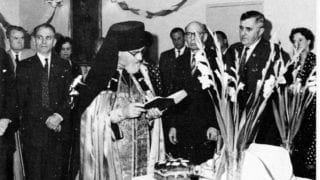
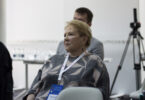
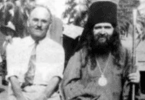
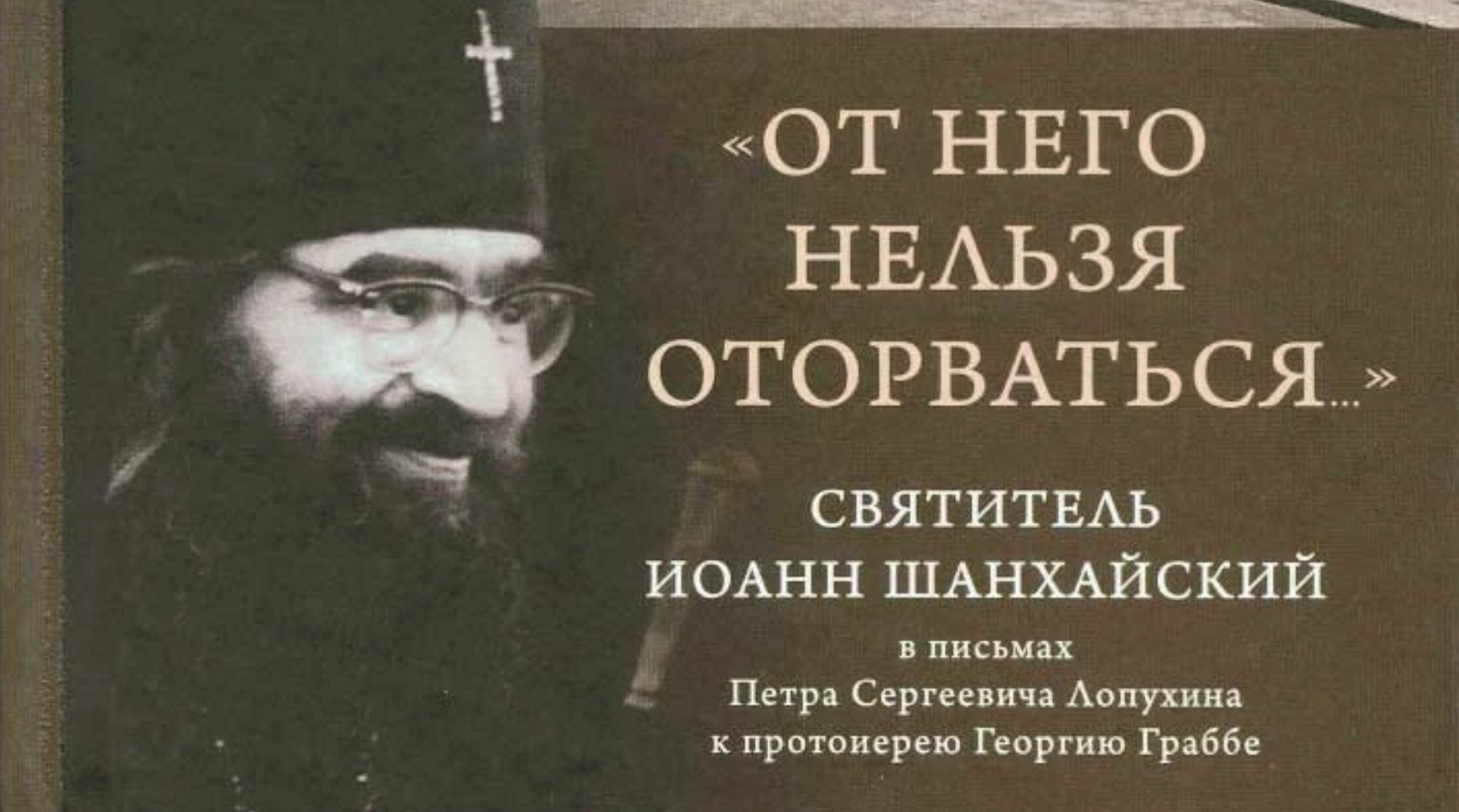
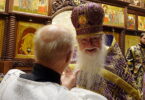
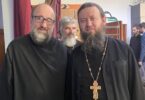
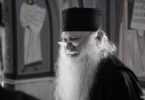
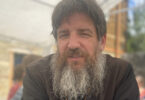


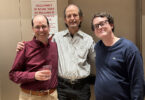
Interesting! I remember seeing information about the parish in South Africa & Fr Alexis Chernai in the two volume book on the history & all the parishes of ROCOR. Forget the name of the book … had white covers.
This book is mentioned in the list of references that D.P. Anashkin used for his article.
Two things I would love to get clarified: (a) in what year did the patriarchate of Alexandria first claim all of Africa as its own territory? (b) in what year were such claims accepted by Local Churches other than Alexandria? No one seems to be able to say. My recollection was that Africa was first claimed by Alexandria in the 1920s, but I cannot find any verification for this concept.